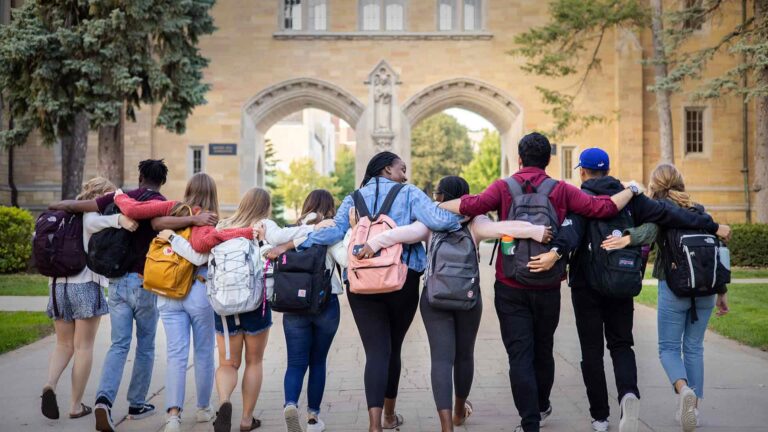As universities across the United States grapple with declining enrollment, the loss of international students emerges as a looming crisis for many institutions. According to a recent report by The New York Times, the sharp decrease in foreign student admissions threatens the financial stability and cultural diversity of numerous colleges and universities. This trend, driven by changing immigration policies, global competition, and pandemic-related disruptions, could have far-reaching consequences for higher education nationwide.
Impact on College Finances and Local Economies Explored
The decline in international student enrollment poses a critical threat to the financial stability of numerous colleges across the United States.Many institutions depend heavily on tuition fees from overseas students, whose payments often exceed those of domestic students. According to recent data, losing even a small percentage of this demographic can lead to multi-million dollar deficits, forcing colleges to make difficult decisions that include cutting academic programs, downsizing staff, and delaying infrastructure improvements. The ripple effect impacts not just campus life but the broader fiscal health of these institutions.
Beyond campus borders, local economies that thrive on the presence of international students also face significant challenges. From housing and retail to restaurants and transportation, a reduction in student populations translates into decreased consumer spending and job losses. The following table highlights key sectors affected in typical college towns with high international student ratios:
| Sector | Estimated Loss (%) | Economic Impact |
|---|---|---|
| Housing Rentals | 30% | Decline in rent revenues from student tenants |
| Local Retail | 25% | Reduced sales at bookstores and convenience stores |
| Food Services | 35% | Lower patronage affecting restaurants and cafes |
| Transportation | 20% | Diminished public transit fare collections |
Experts warn that without proactive policy responses,the financial strain on educational institutions and their communities could accelerate,deepening the socio-economic consequences felt at both local and national levels.
Challenges Faced by International Students Amid Visa and Travel Restrictions
As global uncertainties persist, international students confront a maze of obstacles that disrupt their academic journeys. Delays in visa processing and unforeseen travel bans have forced many to postpone or even abandon their studies abroad. These challenges exacerbate feelings of isolation and anxiety for students who are already grappling with cultural adjustments, financial burdens, and academic pressures.
Key difficulties faced include:
- Strict visa quotas and prolonged processing times
- Sudden government-imposed travel bans
- Limited access to on-campus resources due to remote learning
- Uncertain employment opportunities post-graduation
| Impact Area | Effect on Students | Institutional Consequences |
|---|---|---|
| Visa Delays | Deferred enrollment, loss of financial aid | Enrollment declines, budget shortfalls |
| Travel Restrictions | Inability to attend in-person classes | Drop in classroom diversity, reduced global engagement |
| Remote Learning | Limited networking, diminished learning experience | Lower student satisfaction, reputational risk |
Universities Adapt Recruitment Strategies to Sustain Enrollment
To counteract the sharp decline in international student enrollments, many universities are reimagining their admissions approaches. Institutions are increasingly deploying personalized digital campaigns,leveraging social media influencers from target countries,and expanding partnerships with overseas educational consultants. These efforts are complemented by virtual open houses and streamlined submission processes designed to reduce friction for prospective students abroad.
Key strategies now in focus include:
- Enhanced multilingual outreach materials to engage diverse demographics
- Flexible deferral and hybrid learning options in response to travel restrictions
- Robust scholarship programs tailored for international applicants
| Strategy | Purpose | Impact |
|---|---|---|
| Virtual Campus Tours | Showcase facilities remotely | +35% engagement rate |
| Increased Scholarships | Mitigate financial barriers | +20% international applications |
| Localized Social Media Ads | Reach specific regions | +40% click-through rate |
Policy Recommendations to Support and Retain International Students
Universities must advocate for streamlined visa processes that minimize bureaucratic delays and uncertainties for prospective international students. Expedited visa approvals and flexible travel policies can rebuild trust and encourage enrollment, especially amidst fluctuating global circumstances. Enhanced collaboration between educational institutions and government agencies is pivotal to ensure clear communication and swift resolution of policy changes affecting student mobility.
Additionally, colleges should implement comprehensive support systems to address the unique academic, social, and financial challenges faced by international students. Initiatives such as tailored orientation programs, mental health counseling, and affordable housing solutions can considerably improve retention rates. Consider the following strategic measures:
- Establishing dedicated international student offices that provide continuous guidance
- Offering scholarships and financial aid packages specific to international applicants
- Facilitating access to internships and work opportunities through relaxed visa regulations
| Policy Measure | Impact |
|---|---|
| Visa Process Simplification | Faster enrollment and reduced anxiety |
| Dedicated Support Services | Higher retention and student satisfaction |
| Financial Aid Expansion | Broader access and equity |
Concluding Remarks
As colleges and universities grapple with the potential decline in international student enrollment, the broader implications for academic diversity, institutional funding, and local economies become increasingly clear. The challenges outlined in “Losing International Students Could Devastate Many Colleges” underscore the urgent need for policymakers and educational leaders to develop strategies that support and attract global talent. Without concerted efforts, the future of many institutions—and the students they serve—may face significant uncertainty.




